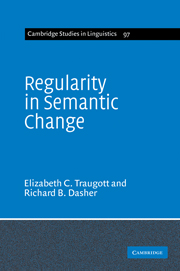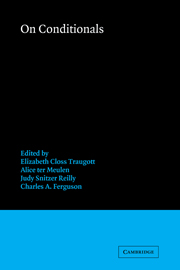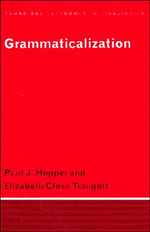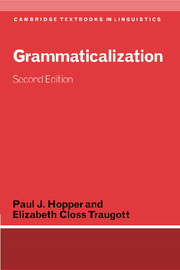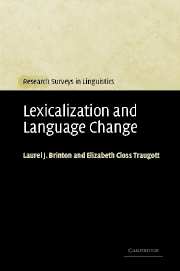Regularity in Semantic Change
This important study of semantic change examines how new meanings arise through language use, especially the various ways in which speakers and writers experiment with uses of words and constructions in the flow of strategic interaction with addressees. There has been growing interest in exploring systemicities in semantic change from a number of perspectives including theories of metaphor, pragmatic inferencing, and grammaticalization. Like earlier studies, these have for the most part been based on data taken out of context. This book is a detailed examination of semantic change from the perspective of historical pragmatics and discourse analysis. Drawing on extensive corpus data from over a thousand years of English and Japanese textual history, Traugott and Dasher show that most changes in meaning originate in and are motivated by the associative flow of speech and conceptual metonymy.
- At the forefront of work in historical pragmatics and discourse analysis
- Reveals systematic principles at work in semantic change, a domain usually thought of as unsystematic
- Draws on data from over a thousand years of English and Japanese textual history
Reviews & endorsements
'How does it come about that linguistic expressions change their meanings over time, or, to be more precise, that speakers start using established linguistic expressions with novel meanings? What is the nature of semantic change, and - more importantly - can we generalize about different instantiations of semantic change not only within individual languages but also cross-linguistically? The book under review, by Elizabeth Closs Traugott and Richard B. Dasher, provides bold answers to such big questions.' Journal of Linguistics
Product details
April 2005Paperback
9780521617918
364 pages
227 × 155 × 21 mm
0.53kg
Available
Table of Contents
- List of figures
- Preface and acknowledgements
- Conventions
- List of abbreviations
- 1. The framework
- 2. Prior and current work on semantic change
- 3. The development of modal verbs
- 4. The development of adverbials with discourse marker function
- 5. The development of performative verbs and constructions
- 6. The development of social deictics
- 7. Conclusion
- Primary references
- Secondary references
- Index of languages
- Index of names
- Index of subjects.

